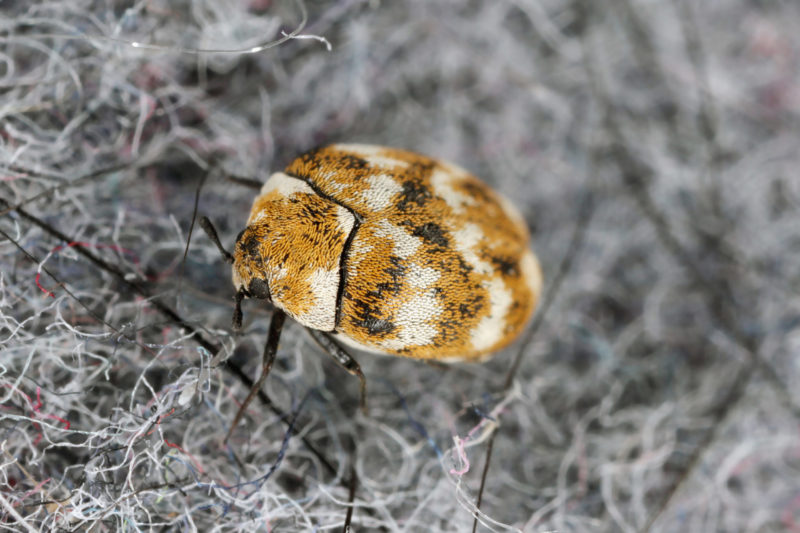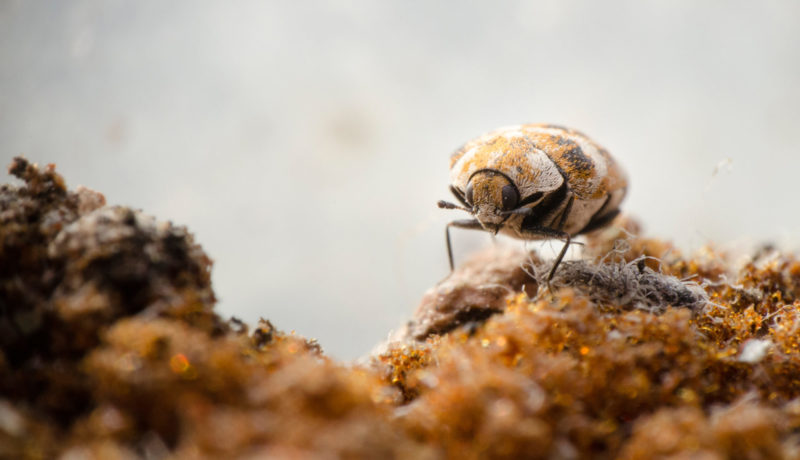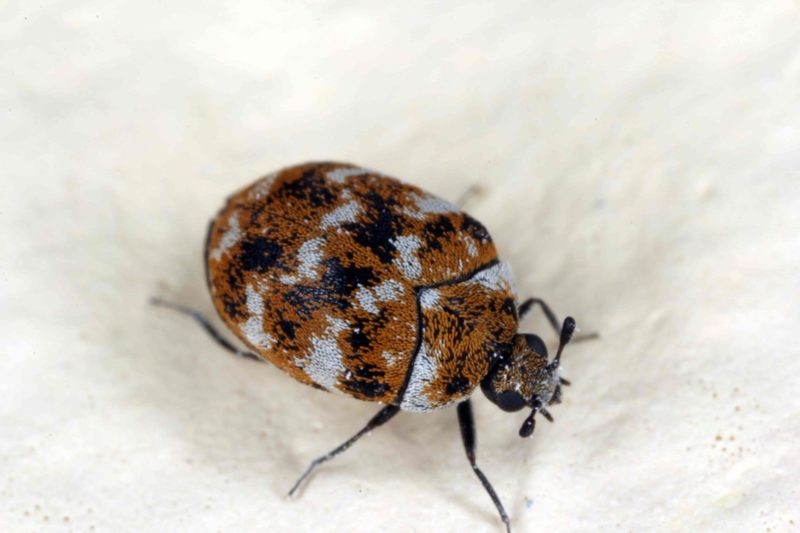Beetles
With over 5,000 native beetle species in New Zealand, most are essential to our ecosystems, but certain beetles can become destructive pests. Pest beetles, such as Carpet Beetles, Common Furniture Beetles, and Larder Beetles, can damage food, furniture, and organic materials in homes and businesses. These pests thrive in varied environments and their infestations require tailored treatment strategies to ensure proper eradication.
If you suspect a beetle infestation in your home or business, don’t wait for the problem to worsen. Flick’s professional beetle pest control services in New Zealand are designed to identify, treat, and prevent beetle infestations effectively. Contact us today to schedule an inspection and safeguard your property from beetle-related damage.

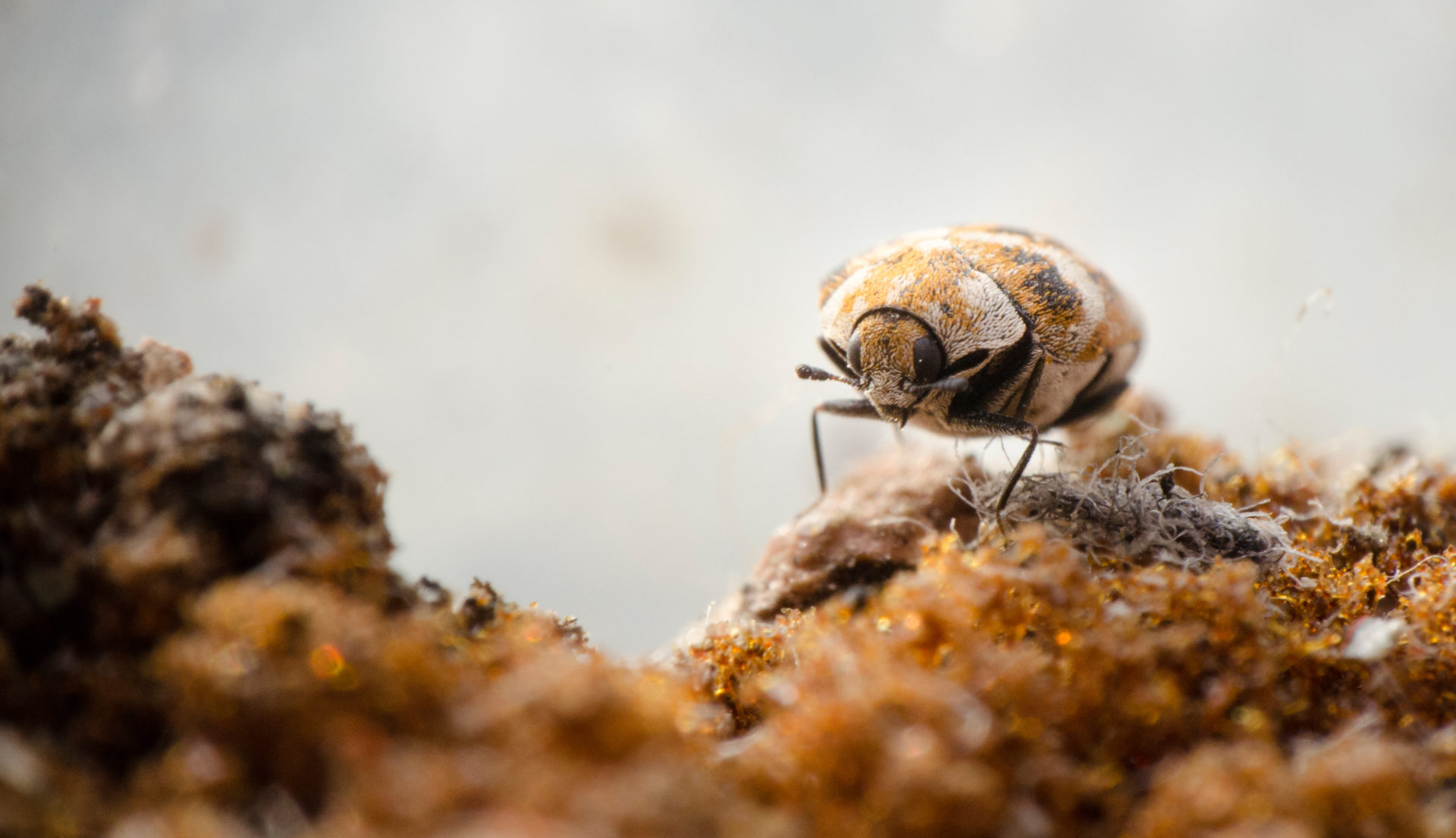
Signs of Beetle Infestation
Early detection of beetle activity can prevent extensive damage:
- Small, round exit holes in timber or furniture.
- Frass (wood dust) beneath infested areas.
- Damaged fabrics or carpets with irregular holes.
- Presence of adult beetles or larvae in and around the property.
If you notice any of these signs, it’s crucial to act promptly to mitigate further damage.
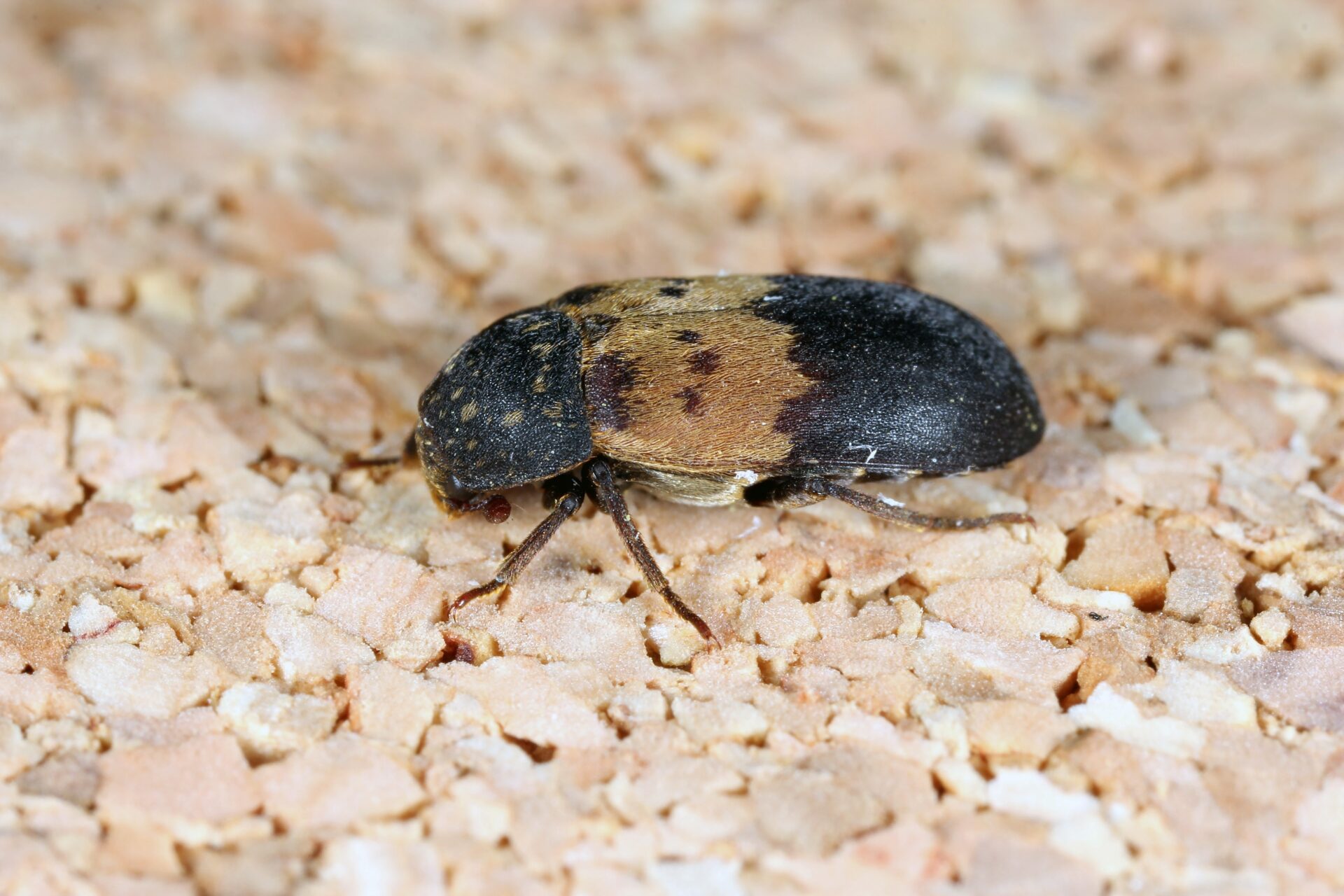
How to Get Rid of Beetles
Managing a beetle infestation involves a combination of identification, treatment, and prevention:
- Inspection: Regularly check for signs of beetle activity, such as exit holes in wood, frass, or damaged fabrics.
- Sanitation: Maintain cleanliness by vacuuming regularly and storing food in airtight containers to reduce attractants.
- Exclusion: Seal cracks and crevices around doors, windows, and foundations to prevent beetles from entering.
- Professional Treatment: For active or severe infestations, professional beetle services are recommended to effectively eliminate the pests and prevent recurrence.
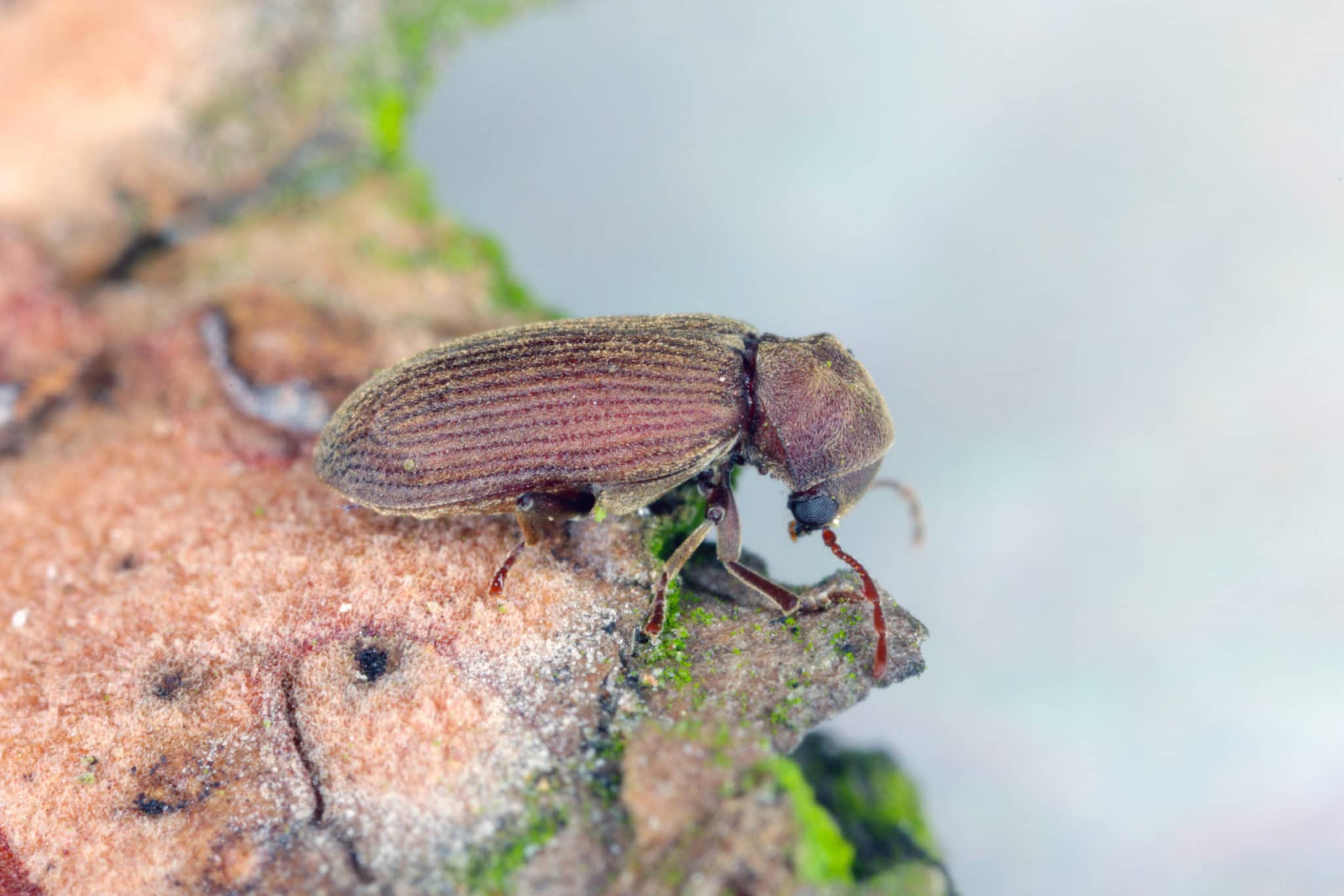
Understanding the Beetle Life Cycle
Comprehending the beetle life cycle aids in timely and effective control measures:
- Egg Stage: Female beetles lay eggs on suitable substrates like wood, fabric, or stored food.
- Larval Stage: Larvae emerge and feed on the material, causing the most damage during this phase.
- Pupal Stage: After sufficient feeding, larvae pupate within the material.
- Adult Stage: Mature beetles emerge, ready to reproduce and continue the cycle.
Targeting beetles at multiple stages of their life cycle is crucial for comprehensive control.
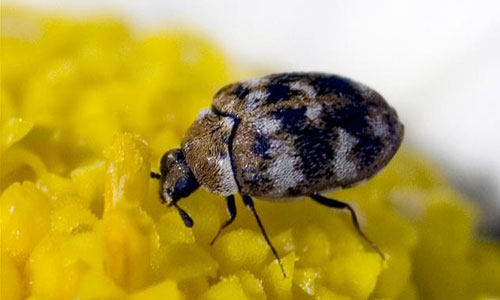
Preventing Beetle Infestations
Proactive measures can significantly reduce the risk of beetle infestations:
- Proper Storage: Keep food products in sealed containers and store them off the ground.
- Regular Cleaning: Vacuum carpets and clean pantry shelves frequently to eliminate potential food sources.
- Inspect Secondhand Items: Check used furniture, rugs, and clothing for signs of beetles before bringing them into your home.
- Moisture Control: Ensure proper ventilation and address any moisture issues, as damp environments attract certain beetle species.
Commercial Beetle Control
Businesses face significant risks from beetle infestations, including damage to property, goods, and reputation. Flick offers comprehensive Integrated Beetle Control Solutions to ensure a pest-free environment. Our specialists conduct regular inspections and treatments, tailored to your business needs, ensuring the safety of both employees and customers.
Common Beetle Questions
What are common features of beetles?
Beetles belong to the Coleptera order, which is Latin for “sheath wings.” They have three main parts: a head, thorax, and abdomen, just as many other insect species. Additionally, they have two wings and three sets of legs. The primary distinction is that the forewings of beetles create a tough, protective sheath that shields the sensitive hindwings.
What do beetles eat?
There are more than 5,000 different kinds of native beetles, thus their diets are very diverse. Pest beetles feed on a range of materials including wood, grains, and organic products. The insects that consume organic material like carpet, wood, and other contained organics like cloth and textiles are the most destructive, and they include furniture beetles, powderpost beetles, and carpet beetles. Pest insects that live in stores, like the Larder Beetle, can be discovered in your home feasting on a wide variety of foods, including grains, rice, flour, or prepared foods like cookies and bread. Food becomes contaminated as a result, necessitating its destruction.
Where do beetles live?
Although they can be found in most settings, beetles are a diverse group of creatures that grow best in warm climates. Its qualities also differ greatly from one another. While some groups are herbivores, others are carnivores. Others eat mushrooms, while some are mostly found in flowers where they feed on pollen and nectar. Others reside under trees or beneath their bark. Pest beetles invade homes and eat food or goods made of wood. Beetles can thrive in various environments, from wood to stored food.
In what ways are beetles pests?
There are more than 5,000 native beetles in New Zealand, but only a small number of them are regarded major pests because they eat wood, grain, organic products, or food. Beetles can invade storage facilities and cause serious issues for agricultural businesses.
What is the beetle life cycle?
Most beetles go through four stages: egg, larva, pupa, and adult. In many cases, larvae can seriously harm things, as with the Carpet Beetle, but the appearance of adult beetles may only indicate moisture issues.
Common Beetle Species

Carpet Beetle
Apppearance
The 0.5 to 1mm translucent eggs are round. The 4mm long, dark-colored larvae are covered in hard bristles. Actually, adults are smaller. They have a speckled colouring and are 2-3 mm.
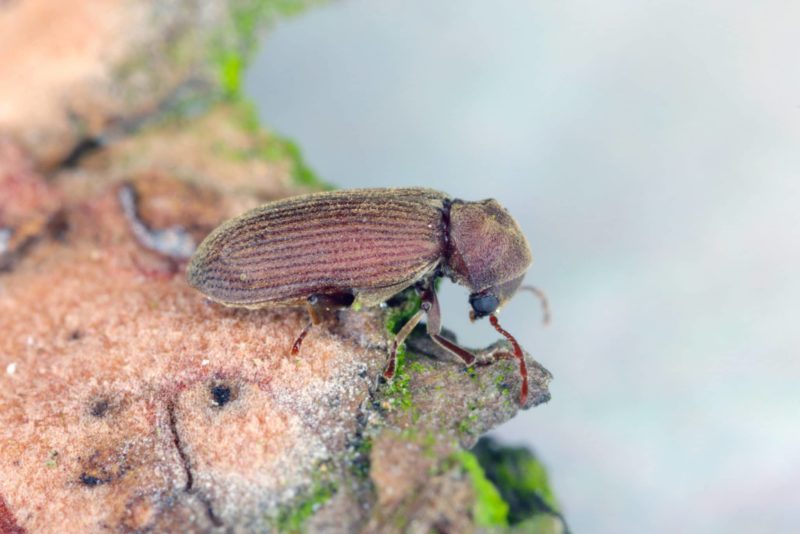
Common Furniture Beetle
Apppearance
The brown Common Furniture Beetle reaches lengths of 3 to 4 mm. They start off as a 1mm long, tiny, white, coiled grub.
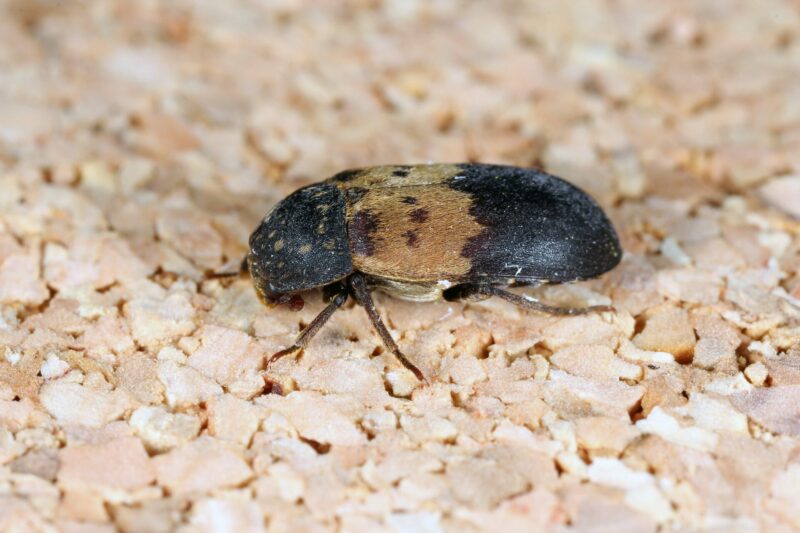
Larder Beetle
Apppearance
A dark surface with light golden hairs. striking yellow-brown streaks along the length of the front of the wing covers, and three brown spots on the body parts with the yellow hair. Large; typically 7-9mm, but capable of reaching 15mm.
I found Beetles! Help!
Don't worry, we're here to help. Follow these steps to stay safe until help arrives!
Call a Professional
Call Flick Pest Control Immediately.
If you encounter beetles in your home or business, you may be dealing with an infestation. Don’t wait until the problem gets out of hand – we can help protect your property and ensure the health and safety of those around you. Fill out the form below or call 0800 710 010 today.
Leave the Beetles Alone
Trust Flick Pest Control to handle the situation
Our pest control technicians have the knowledge, experience, and tools necessary to effectively and safely eliminate pests from your home or business. Attempting to treat beetles on your own can be risky and may not fully eradicate the problem.
We will and ensure a safe and effective outcome for your property.
There May be More!
Don’t Go Looking Around!
Flick’s pest control experts will perform a thorough inspection of the property to identify any areas where beetles may be present, followed by the development of a treatment plan tailored to the specific needs of the situation. By implementing effective pest control strategies, we can help ensure a pest-free environment for you.


